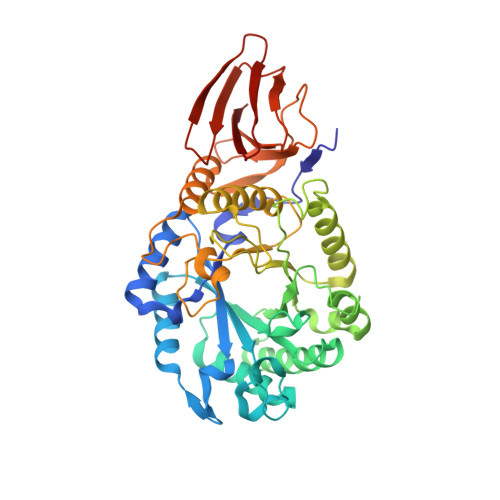PslG, a self-produced glycosyl hydrolase, triggers biofilm disassembly by disrupting exopolysaccharide matrix
Yu, S., Su, T., Wu, H., Liu, S., Wang, D., Zhao, T., Jin, Z., Du, W., Zhu, M.J., Chua, S.L., Yang, L., Zhu, D., Gu, L., Ma, L.Z.(2015) Cell Res 25: 1352-1367
- PubMed: 26611635
- DOI: https://doi.org/10.1038/cr.2015.129
- Primary Citation of Related Structures:
4ZN2 - PubMed Abstract:
Biofilms are surface-associated communities of microorganism embedded in extracellular matrix. Exopolysaccharide is a critical component in the extracellular matrix that maintains biofilm architecture and protects resident biofilm bacteria from antimicrobials and host immune attack. However, self-produced factors that target the matrix exopolysaccharides, are still poorly understood. Here, we show that PslG, a protein involved in the synthesis of a key biofilm matrix exopolysaccharide Psl in Pseudomonas aeruginosa, prevents biofilm formation and disassembles existing biofilms within minutes at nanomolar concentrations when supplied exogenously. The crystal structure of PslG indicates the typical features of an endoglycosidase. PslG mainly disrupts the Psl matrix to disperse bacteria from biofilms. PslG treatment markedly enhances biofilm sensitivity to antibiotics and macrophage cells, resulting in improved biofilm clearance in a mouse implant infection model. Furthermore, PslG shows biofilm inhibition and disassembly activity against a wide range of Pseudomonas species, indicating its great potential in combating biofilm-related complications.
Organizational Affiliation:
State Key Laboratory of Microbial Resources, Institute of Microbiology, Chinese Academy of Sciences, Beijing 100101, China.














